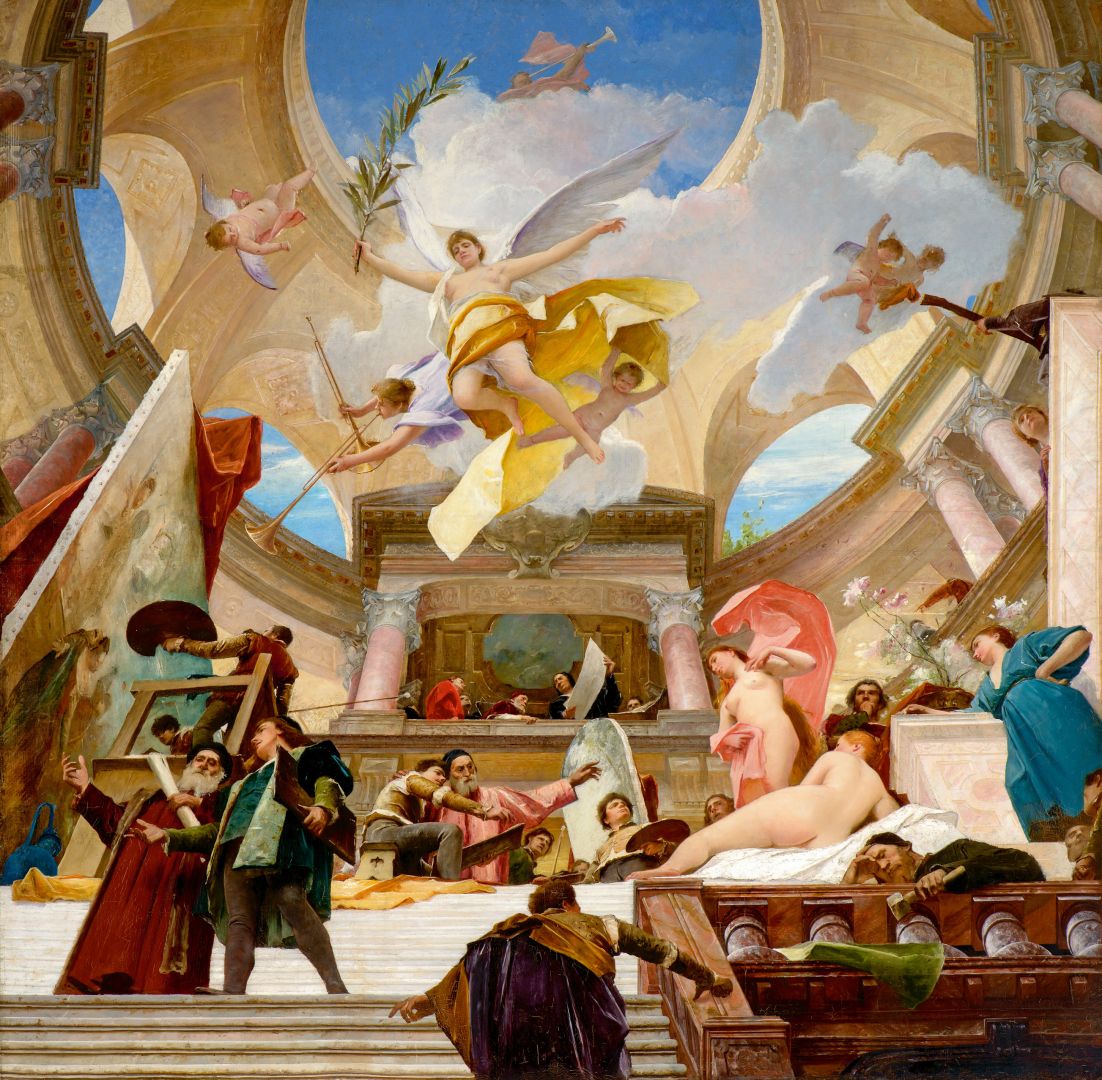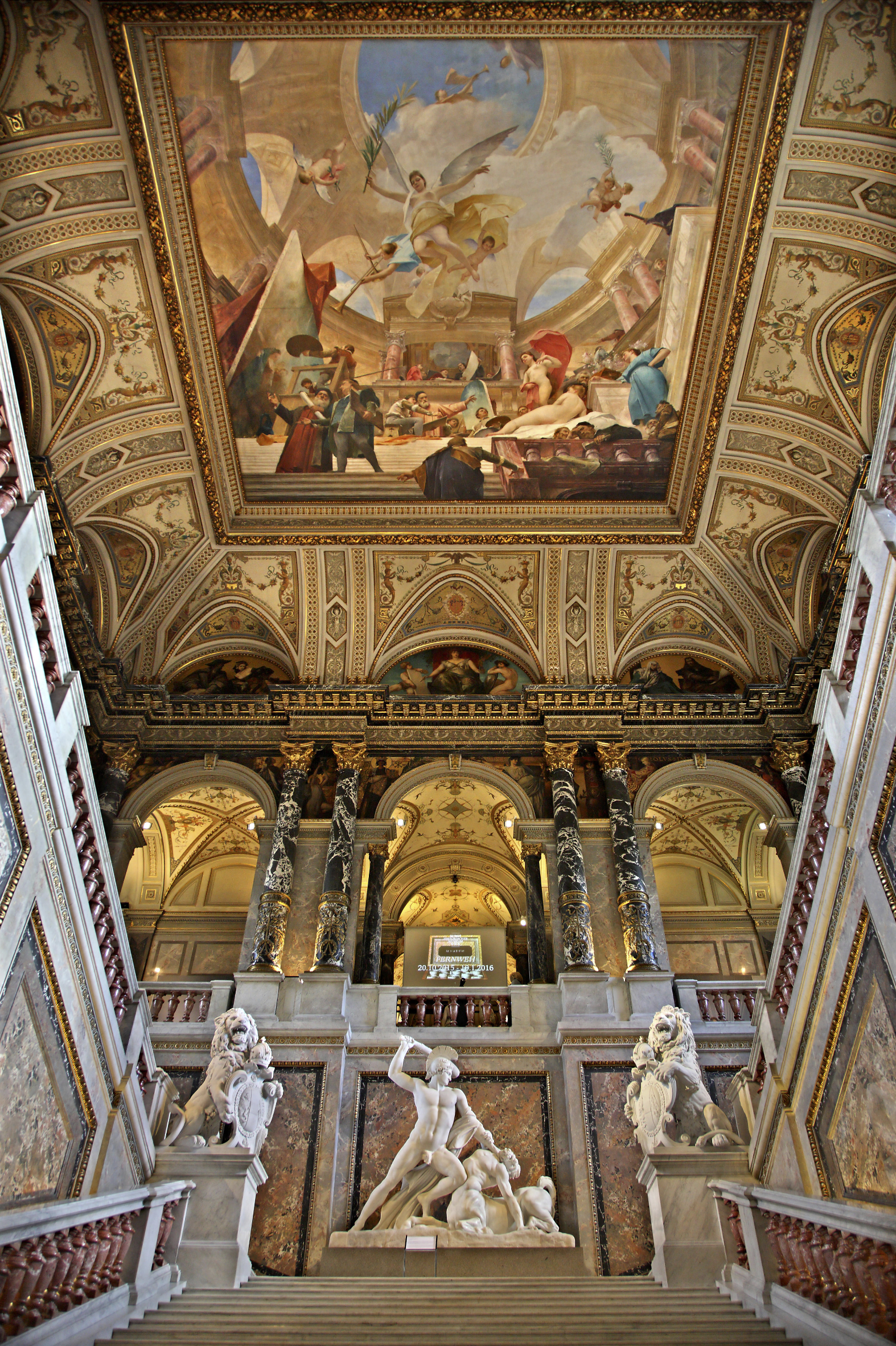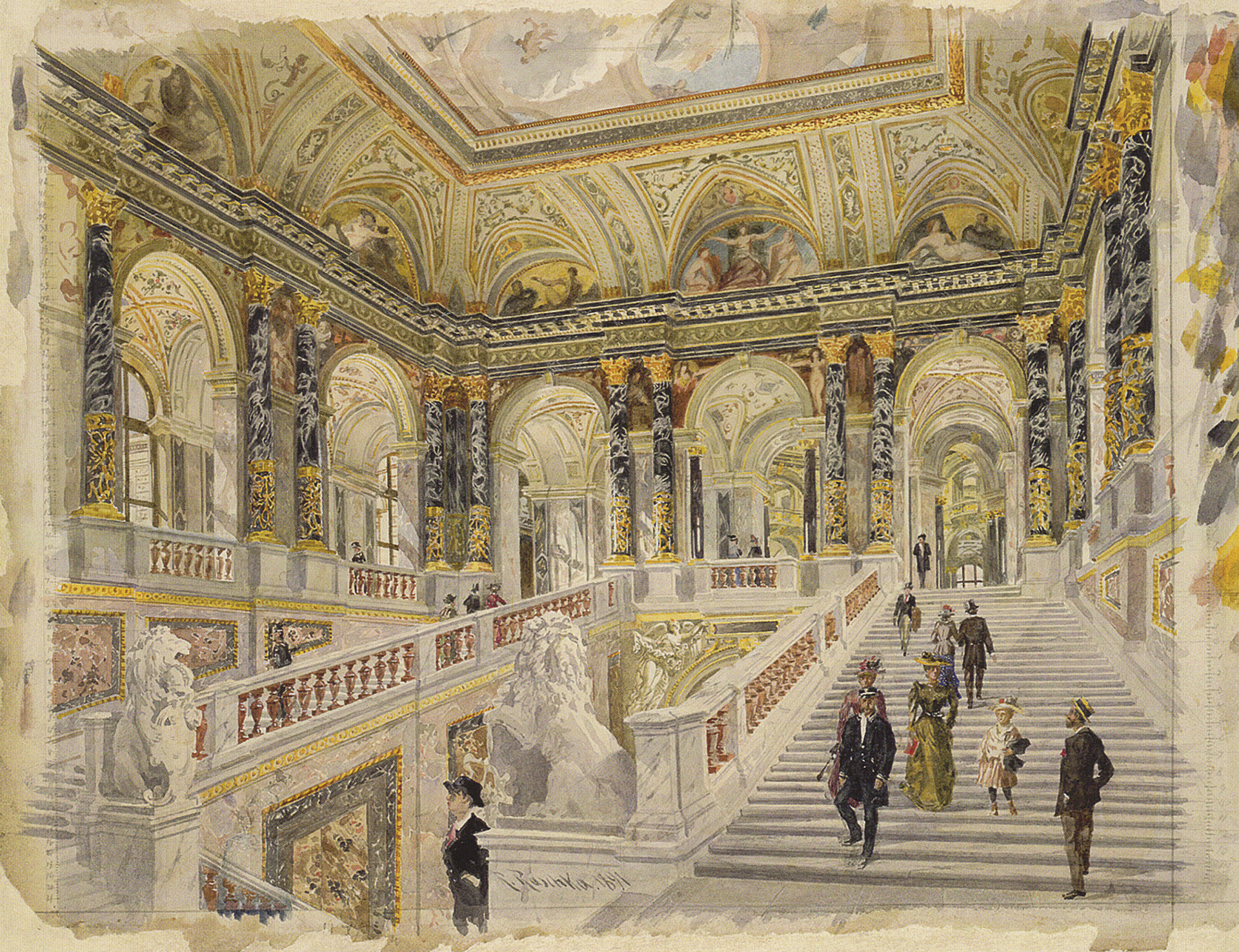The "Colossal" Paintings and World Renown - 5
THE APOTHEOSIS OF THE RENAISSANCE
MUNKÁCSY Mihály
(1844–1900)
THE APOTHEOSIS OF THE RENAISSANCE
(LARGE-SCALE COMPOSITIONAL STUDY FOR THE CEILING PAINTING OF THE KUNSTHISTORISCHES MUSEUM IN VIENNA)
1889
Oil on canvas
Museum of Fine Arts – Hungarian National Gallery, Budapest
Inv. no. 2564
The Apotheosis of the Renaissance, painted above the imposing staircase in Vienna's museum of fine arts, is a celebration of the glories of the Italian Renaissance. Munkácsy was requested to produce the ceiling painting by Emperor Franz Joseph in 1886. Measuring one hundred square metres, and fascinating in terms of both its technique and the brilliance of its execution, the composition was completed by 1890. Rather than a fresco in the classical sense of the term, it is the semblance of architecture painted in oils on a vast canvas: despite its horizontality, it creates the perfect illusion of a hemispherical dome.
Below the painted dome, reminiscent of the Pantheon in Rome, appears a temple-like artist's studio. In the upper loggia, the architect Bramante presents the plans for the new Saint Peter's Basilica to Pope Julius II and his entourage. Below the loggia are the celebrated painters of the Italian Renaissance: Titian and Veronese, with Leonardo and Raphael in front to the left, and Michelangelo on the right. Allegories of Fame and Glory descend from above, surrounded by cupids.
The work is a salute to the ideals of academic art. Munkácsy even included himself in the work: he can be seen on the right-hand side, behind the nude female models. The very presence of a self-portrait in this grandiose setting attests to the fact that the painter was now ready to acknowledge his own significance and take his place among the greats. With this monumental work, Munkácsy created his own memorial, ten years before his death.


